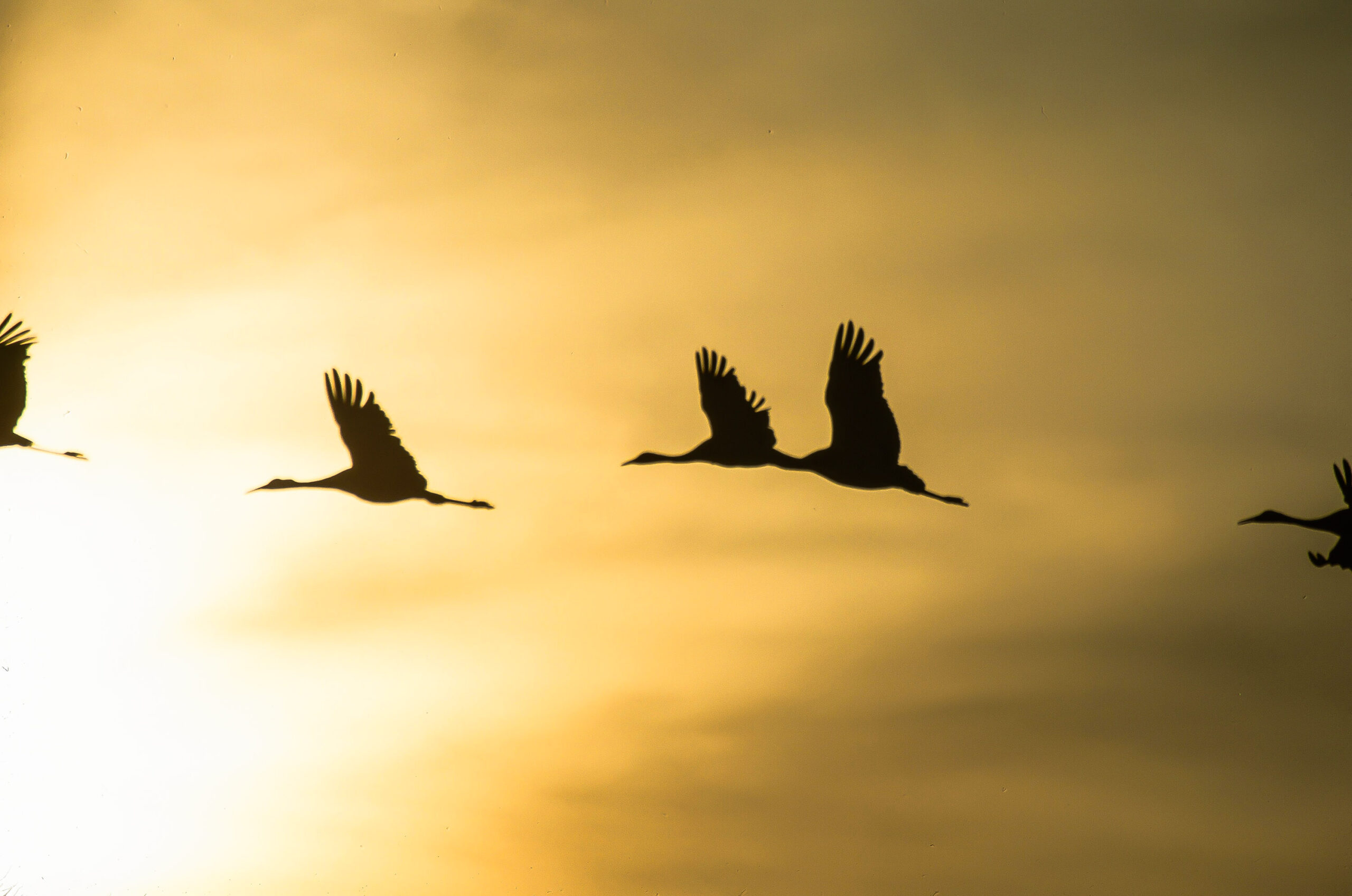A Q&A with biology professor Dr. Vincent Cassone
As a biology professor and researcher at the University of Kentucky, Dr. Vincent M. Cassone studies the mechanisms by which organisms tell time—time of day, time of year, and even the passage of time from birth to death. His team investigates how the circadian biological clock regulates complex behavior and physiology—including the timing and complexity of birdsong, both seasonally and over the course of the day.
Dr. Cassone was a featured panelist at the Louisville Audubon Society’s Lights Out Louisville launch event on August 22, 2024. This Q&A has been condensed and lightly edited for clarity.
Louisville Audubon Society (LAS): What do you see as the most important reason for going Lights Out?
Dr. Vincent Cassone: From a biological perspective, artificial light at night has a broad range of damaging effects. It interferes with the migratory patterns of birds—but it also changes the breeding patterns of many animals and has deleterious effects on health for humans.
Just by minimizing the amount of light emitted into the environment at night, we can immediately eliminate myriad issues for both people and animals.
LAS: Let’s dig into that answer, starting with the migratory patterns of birds. Why are spring and fall such critical times to reduce artificial lighting at night?
Cassone: Small passerine birds, such as warblers and other songbirds, are genetically coded with an internally regulated timekeeping process called migratory restlessness, or Zugunruhe. It tells them when they need to migrate and even how long they need to travel to get to their breeding or wintering grounds.
Zugunruhe is triggered when the length of the day shifts from very long in the summer, or very short in the winter, to equinoctial—meaning periods of daytime and nighttime are more or less equal across a 24-hour span—in the spring and fall. So, in the springtime, it tells passerines it’s time to head to their summer breeding grounds or homes, and in the fall, it tells them to head to their winter homes.
There are fascinating studies that show, for example, birds reared in captivity and kept under constant experimental conditions will still show seasonal changes of behavior—Zugunruhe—even when they have no external cues as to the season.
Passerines mainly migrate at night. Some species use the night sky to aid their navigation, while others use the cover of darkness as a way to stay safe and cool during their arduous journey.
So Zugunruhe—an-age old process—is being screwed up by artificial lights that disorient birds and pull them off their migration paths.
This can have a major impact on species survival: Some birds may arrive at their summer or winter homes when their food sources aren’t readily available. (LAS note: For example, many birds time their migration journeys to coincide with peak insect abundance in their stopover areas or nesting grounds. If they arrive after the peak, they may have trouble finding enough insects to eat or feed to their nestlings.)
LAS: What about people? How does artificial light at night affect human behavior and health?
Cassone: Artificial light at night influences many factors of physiology. Perhaps the most obvious are negative impacts to quality and quantity of sleep, which in turn affects the biological systems that require enough sleep to function properly.
Anyone who has experienced jet lag knows what it feels like to have their internal biological clock disturbed. If these disturbances occur frequently enough, they can lead to a host of health problems, including cardiovascular disease and cancer.
Plus, there is some evidence from our lab studies that the gastrointestinal system has its own biological clock. Staying awake longer at night increases the likelihood that you eat late at night—which not only can cause obesity-related illnesses, but also throws off your gastrointestinal system in conjunction with your circadian sleep rhythm.
LAS: Can you dive deeper into how some types of lighting affect birds and people, and what types of lighting we should use to protect birds and ourselves?
Cassone: To navigate in space and maintain their biological clocks, birds rely on the same wavelengths and ultraviolet colors that blue-toned lighting emits.
Blue light also worsens “sky glow”—the increased brightness of the night sky due to light pollution—because it has a broader geographic reach.
Ultra-bright, cool-toned lighting can therefore throw birds off course—whether it comes from outdoor lighting or undimmed/unshaded indoor lighting shining from windows in a home or building.
Blue-rich white-light sources also can increase glare and compromise vision in humans, especially for older people. This type of lighting has been known to give people headaches as well as disrupt circadian rhythms—with the latter being the reason people are supposed to avoid looking at phone or computer screens too close to bedtime.
Switching to LED lighting can help people reduce energy and protect birds and the environment without compromising visibility, but only warm-colored bulbs should be used to minimize blue emission. That means 3,000 Kelvin or lower, and an S/P ratio of 1.2 or lower.
(LAS note: And, of course, turning off unused indoor and outdoor lights and downshielding outdoor lighting are low-tech ways to reduce light pollution and protect migratory birds.)
We already have the technology and the means to improve lighting conditions for both people and birds. We just have to make the choice to do so.

No responses yet